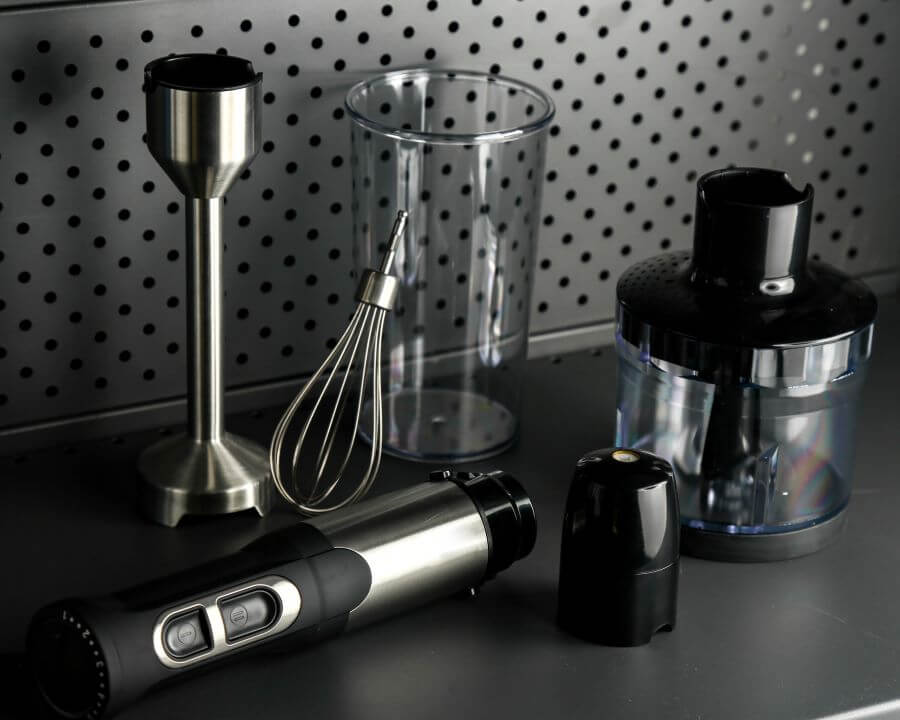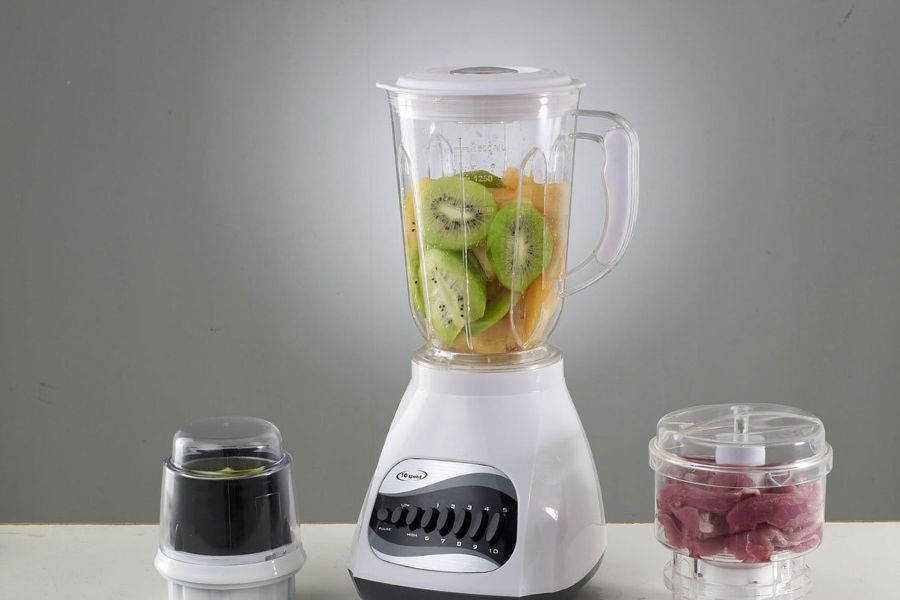Picture this: you’re whipping up a delicious smoothie, only to realize your blender has struck. Is it a culinary roadblock, or can you still make it work?

Have you ever found yourself in a recipe that calls for a trusty blender, only to realize you’ve got a trusty food processor instead? Well, that’s where the magic of kitchen versatility comes into play.
Let’s embark on this kitchen adventure, armed with the knowledge of each appliance’s unique strengths and quirks. Like a culinary FBI, let’s determine if your food processor can reach the blending plate.
In this article, we’ll dive deep into kitchen appliances and explore using a food processor as a blender.
Understanding Your Food Processor and Blender
Let’s start by getting acquainted with our kitchen multitool: the food processor. This workhorse is a wizard at chopping, slicing, grating, and even kneading dough.
It is your go-to kitchen multitasker when dealing with mostly dry ingredients, perfect for whipping chunky salsas, creamy hummus, or finely grated cheese. The food processor, with its array of blades and attachments, is like the Swiss Army knife of the culinary world.
The blender, on the other hand, is the master of liquids and a smooth operator of the kitchen. It thrives on ingredients with a good dose of juice, crafting silky-smooth smoothies, velvety soups, sorbets, and luscious sauces.
Blender blades, though not as sharp as those in a food processor, do their magic best when surrounded by liquids, ensuring everything is smoothly blended. It is designed to blend, puree, and liquefy ingredients into smooth concoctions.
From silky soups to velvety smoothies, the blender has got it all covered.
Can You Use a Food Processor as a Blender?
Now, to the day’s question: Can you use a food processor as a blender? Well, the short answer is yes, but with some considerations. The answer lies in the details of the recipe and your culinary ambition.
As a rule of thumb, food processors excel with dry ingredients, while blenders dance gracefully with wet ones. Food processors flaunt sharper blades but boast less powerful motors, while blenders sport duller blades but pack a powerful punch under the hood.
So, whether your food processor can sub in for a blender depends on what you’re cooking. In most cases, you can give it a whirl by using the blade attachment on your food processor for a recipe that usually calls for a blender.
However, it’s essential to manage your expectations. Smoothies and soups might not achieve that silky, perfectly blended consistency you’d get with a blender. As for iced drinks, it’s a stretch for your trusty food processor.
Food processors are versatile, but they do have their limitations. They lack the high-speed blades and robust motors that blenders boast. So, while a food processor can handle some blending tasks, it will achieve different silky-smooth results than a dedicated blender.
Advantages of Using a Food Processor as a Blender
Let’s explore why you might consider using your food processor for blending tasks. One significant advantage is its versatility. Your food processor can tackle various kitchen jobs beyond blending, making it a valuable all-in-one tool.
Think about effortlessly switching from slicing veggies for a salad to whipping a quick fruit smoothie in one appliance.

Limitations and Considerations
While your food processor can act like a blender, it is crucial to understand its limitations. The biggest drawback is texture. Food processors can achieve a different silky-smooth consistency than blenders due to their slower speed and different blade designs.
To overcome this limitation, consider pre-processing ingredients or using additional liquids to facilitate blending. Remember that patience is critical when using a food processor for blending, as it may take a bit longer to reach your desired texture.
Popular Foods to Blend with a Food Processor
Are you curious about what to whip up using your food processor as a blender? The possibilities are endless. Here are some examples:
- Smoothies: You can use your food processor to blend your favorite fruits, yogurt, and ice for a refreshing morning treat.
- Soup: You may use the food processor to create creamy soups by pureeing cooked vegetables, broth, and seasonings.
- Dips and Spreads: You can use your food processor to make hummus, pesto, or salsa for your next snack attack.
- Nut Butter: You can use your food processor to transform nuts into creamy spreads by adding a touch of oil.
- Baby Food: You may use your food processor to prepare homemade baby food by blending steamed fruits and veggies.
- Pancake Batter: Food processors can help you achieve a lump-free pancake batter by blending the ingredients thoroughly.
How to Use Your Food Processor as a Blender
Let’s roll up our sleeves and get to the fun part – using your food processor as a blender. Here’s a step-by-step guide to help you navigate the process with ease:
- Choose the Right Blade: Start by selecting the appropriate blade for blending. Many food processors have a “S” or “Sabatier” blade for mixing and pureeing.
- Prepare Ingredients: Ensure your ingredients are prepped and ready to go. Chop more oversized items into smaller pieces for smoother blending.
- Layer Ingredients: Layer your ingredients strategically. Place heavier or harder items at the bottom to ensure even blending.
- Add Liquids: To facilitate blending, add a small amount of liquid (water, juice, milk, etc.) to your mixture. This helps create a smoother consistency.
- Pulse and Blend: Start with pulsing to break down larger pieces, then blend continuously until you achieve your desired texture. Be patient, as it may take a bit longer than a blender.
- Scrape the Sides: Periodically stop the food processor and scrape down the sides with a spatula to ensure even blending.
- Adjust Consistency: Add more liquid to reach your desired consistency if needed.

Cleaning and Maintenance
Now that you have successfully transformed your food processor into a blender, it is time for some clean-up duty. Cleaning your food processor after blending is easy. Follow this step-by-step guide:
- Unplug: Always start by unplugging your food processor to ensure safety during cleaning.
- Remove Blades and Parts: Carefully remove the blade and any removable parts, such as the lid and work bowl.
- Hand Wash: Wash these parts by hand with warm, soapy water. Be cautious with sharp blades.
- Wipe the Base: Wipe the base of the food processor with a damp cloth or sponge, taking care not to immerse it in water.
- Dry Thoroughly: Ensure all parts are completely dry before reassembling or storing your food processor.
Wrap up
In the ever-evolving world of cooking, creativity knows no bounds. While food processors and blenders have distinct roles in the kitchen, the beauty lies in their adaptability.
Using a food processor as a blender is possible and straightforward with patience and know-how. So, go ahead, explore, and experiment with your culinary game with this dynamic duo.
